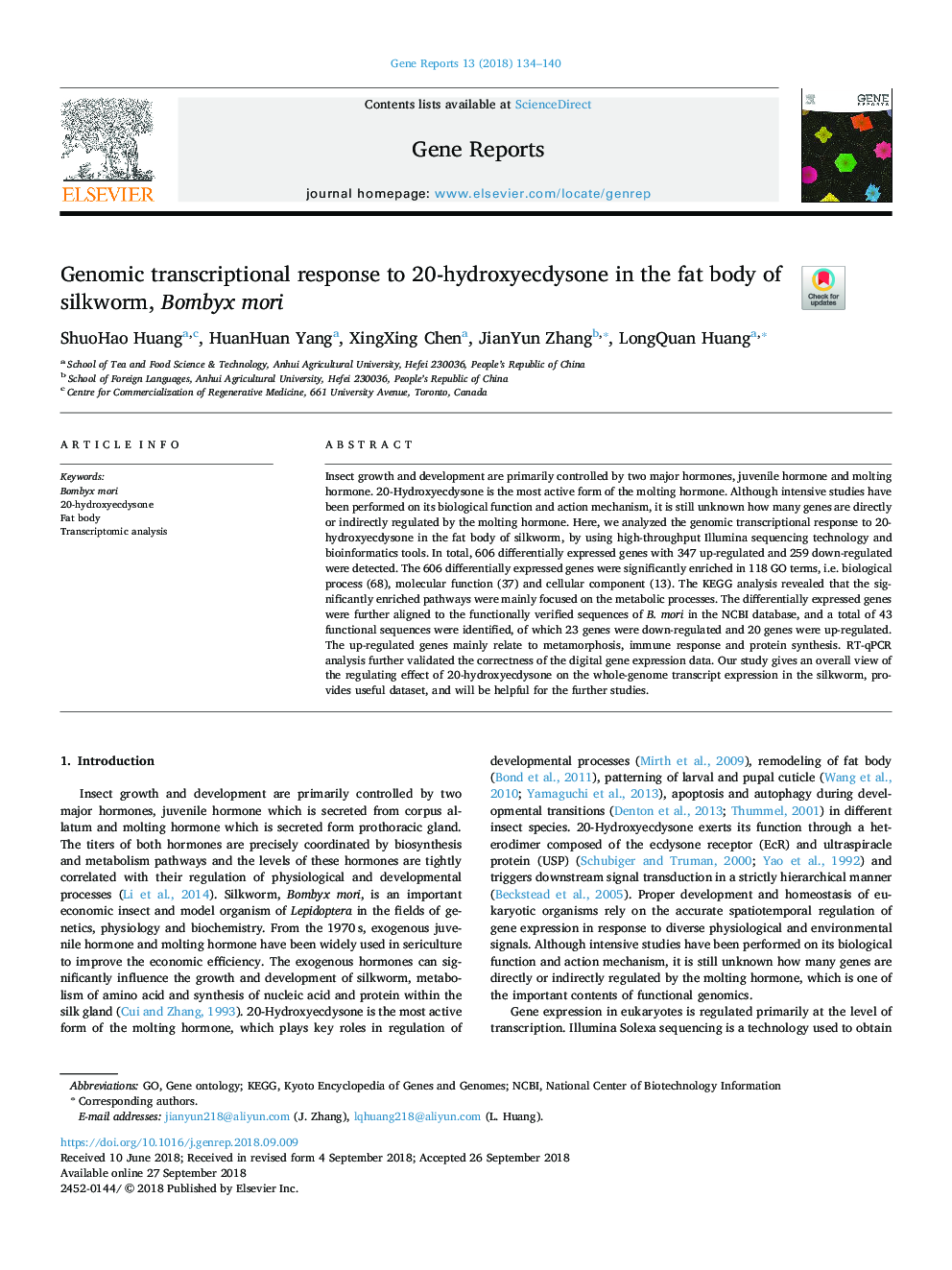| Article ID | Journal | Published Year | Pages | File Type |
|---|---|---|---|---|
| 11033763 | Gene Reports | 2018 | 7 Pages |
Abstract
Insect growth and development are primarily controlled by two major hormones, juvenile hormone and molting hormone. 20-Hydroxyecdysone is the most active form of the molting hormone. Although intensive studies have been performed on its biological function and action mechanism, it is still unknown how many genes are directly or indirectly regulated by the molting hormone. Here, we analyzed the genomic transcriptional response to 20-hydroxyecdysone in the fat body of silkworm, by using high-throughput Illumina sequencing technology and bioinformatics tools. In total, 606 differentially expressed genes with 347 up-regulated and 259 down-regulated were detected. The 606 differentially expressed genes were significantly enriched in 118 GO terms, i.e. biological process (68), molecular function (37) and cellular component (13). The KEGG analysis revealed that the significantly enriched pathways were mainly focused on the metabolic processes. The differentially expressed genes were further aligned to the functionally verified sequences of B. mori in the NCBI database, and a total of 43 functional sequences were identified, of which 23 genes were down-regulated and 20 genes were up-regulated. The up-regulated genes mainly relate to metamorphosis, immune response and protein synthesis. RT-qPCR analysis further validated the correctness of the digital gene expression data. Our study gives an overall view of the regulating effect of 20-hydroxyecdysone on the whole-genome transcript expression in the silkworm, provides useful dataset, and will be helpful for the further studies.
Keywords
Related Topics
Life Sciences
Biochemistry, Genetics and Molecular Biology
Genetics
Authors
ShuoHao Huang, HuanHuan Yang, XingXing Chen, JianYun Zhang, LongQuan Huang,
